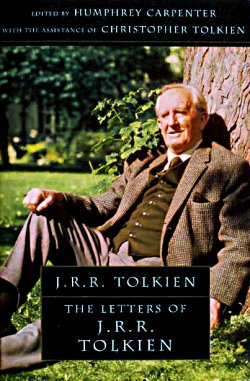 In this volume of posthumously-published work by J.R.R. Tolkien, we are treated to his reworking of two related tales - from the Poetic or Elder Edda - which Tolkien's cast into modern(ish) English poems that follow the rules of Norse poetry. Christopher Tolkien guesses that his father wrote these poems some time in the early 1930s.
In this volume of posthumously-published work by J.R.R. Tolkien, we are treated to his reworking of two related tales - from the Poetic or Elder Edda - which Tolkien's cast into modern(ish) English poems that follow the rules of Norse poetry. Christopher Tolkien guesses that his father wrote these poems some time in the early 1930s. The two poems are preceded by an foreword by Christopher Tolkien which explains his father's interest in legends from "the nameless North", an essay by Tolkien, which probably was to be the basis of a lecture on the Elder Edda, and some brief notes related to the history and subject matter of the poems. They are followed by three more broadly explanatory appendices by Christopher Tolkien regarding the origins of the legends, and the history of Attila the Hun.
The two poems themselves are a bit hard to follow if one is not already familiar with the original legends; however, Christopher Tolkien has provided helpful explanatory notes after each poem. The difficulty of the poems is intentional: Tolkien was mimicking style of Old Norse poetry. Here finesse in the form of the story was not paramount, what was desired was energy and the impact of the language and the sound of the language. As Tolkien says:
...Old English verse does not attempt to hit you in the eye. To hit you in the eye was the deliberate intention of the Norse poet ... Few who have been through this process can have missed the sudden recognition that they had unawares met something of tremendous force, something that in parts (for it has various parts) is still endowed with an almost demonic energy, in spite of the ruin of its form.
In short, the poems are fleet and vigorous, and they are short on narration and exposition. And so it is with Tolkien's poems in this volume. I admit I lost the thread of the story on more than one occasion, but I was rescued by the explanatory notes. Overall, I thoroughly enjoyed the experience.
So do you want to know what the poems were about? Well, read the book.
Publishing details: The Legend of Sigurd and Gudrun by J.R.R. Tolkien (edited by Christopher Tolkien, HarpersCollins, London, 2009, pp.376)
Publishing details: The Legend of Sigurd and Gudrun by J.R.R. Tolkien (edited by Christopher Tolkien, HarpersCollins, London, 2009, pp.376)


